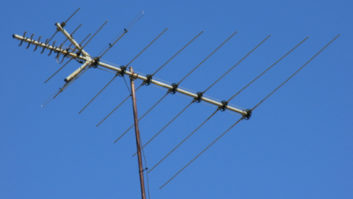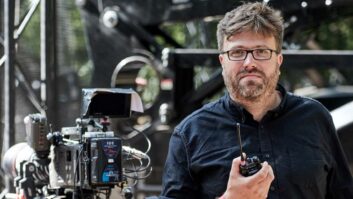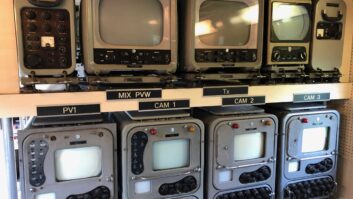BSkyB is investigating ways to broadcast full resolution 3D, revealed Chris Johns, BSkyB’s chief engineer, broadcast strategy, Wednesday (15 June) during TVB Europe’s 3D Masters conference at BAFTA in London, writes Carolyn Giardina.
Describing Sky 3D’s use of a frame compatible format (which squeezes two signals into a single HD frame) as a “successful stepping stone” to getting 3D to viewers home, Johns (pictured) said: “At the moment we are doing frame compatible. … You can get a better image if you can send full resolution images.
“We need to working with set top box makers and standards bodies to come up with the next set of standards for 3D.”
On the technical evolution, he noted that it is “vital” to live events to get correct camera positions. To that end, he gave a nod to developing 3D camcorders—the so-called “WALL-E cams”—that are being introduced by JVC, Panasonic and Sony. ‘These will be essential to getting close to the action,” Johns suggested. “They will have their place.”
During his keynote, Johns also urged the crowd to fill the content gap so that all can “embrace 3D.” To that end, he cited BSkyB’s recent announcement that it plans to increase its programme production spend by 50% across the company, with a planned budget of 600 million GBP per year, over the next three years. “We are going to do some 3D,” he said.
Sky 3D’s live sports initiatives include 2-3 Premier League matches per week, Ryder Cup and Champions League finals. He suggested that it appears possible to do 3D/2D simulcasts with programming such as darts and possibly opera “because of the slower pace of the cutting.”
He related that the industry needs to start to investigate how dance, game, and other types of programming will work in a 3D format.
Upcoming Sky 3D productions include Atlantic Productions’ documentary about penguins, which is slated for broadcast in December. Sky is also investing in partnerships with US broadcasters such as National Geographic and with local companies in the UK such as Colonial Pictures.
Johns concluded though that is more important to have quality that quantity. “The 3D child has been born,” he said. “We have to make sure the child matures into an adult in sensible way.”
Image: James Cumpsty
www.3d-tvmasters.com
BSkyB is investigating ways to broadcast full resolution 3D, revealed Chris Johns, BSkyB’s chief engineer, broadcast strategy, Wednesday (15 June) during TVB Europe’s 3D Masters conference at BAFTA in London, writes Carolyn Giardina.
Describing Sky 3D’s use of a frame compatible format (which squeezes two signals into a single HD frame) as a “successful stepping stone” to getting 3D to viewers home, Johns (pictured) said: “At the moment we are doing frame compatible. … You can get a better image if you can send full resolution images.
“We need to working with set top box makers and standards bodies to come up with the next set of standards for 3D.”
On the technical evolution, he noted that it is “vital” to live events to get correct camera positions. To that end, he gave a nod to developing 3D camcorders—the so-called “WALL-E cams”—that are being introduced by JVC, Panasonic and Sony. ‘These will be essential to getting close to the action,” Johns suggested. “They will have their place.”
During his keynote, Johns also urged the crowd to fill the content gap so that all can “embrace 3D.” To that end, he cited BSkyB’s recent announcement that it plans to increase its programme production spend by 50% across the company, with a planned budget of 600 million GBP per year, over the next three years. “We are going to do some 3D,” he said.
Sky 3D’s live sports initiatives include 2-3 Premier League matches per week, Ryder Cup and Champions League finals. He suggested that it appears possible to do 3D/2D simulcasts with programming such as darts and possibly opera “because of the slower pace of the cutting.”
He related that the industry needs to start to investigate how dance, game, and other types of programming will work in a 3D format.
Upcoming Sky 3D productions include Atlantic Productions’ documentary about penguins, which is slated for broadcast in December. Sky is also investing in partnerships with US broadcasters such as National Geographic and with local companies in the UK such as Colonial Pictures.
Johns concluded though that is more important to have quality that quantity. “The 3D child has been born,” he said. “We have to make sure the child matures into an adult in sensible way.”
Image: James Cumpsty







